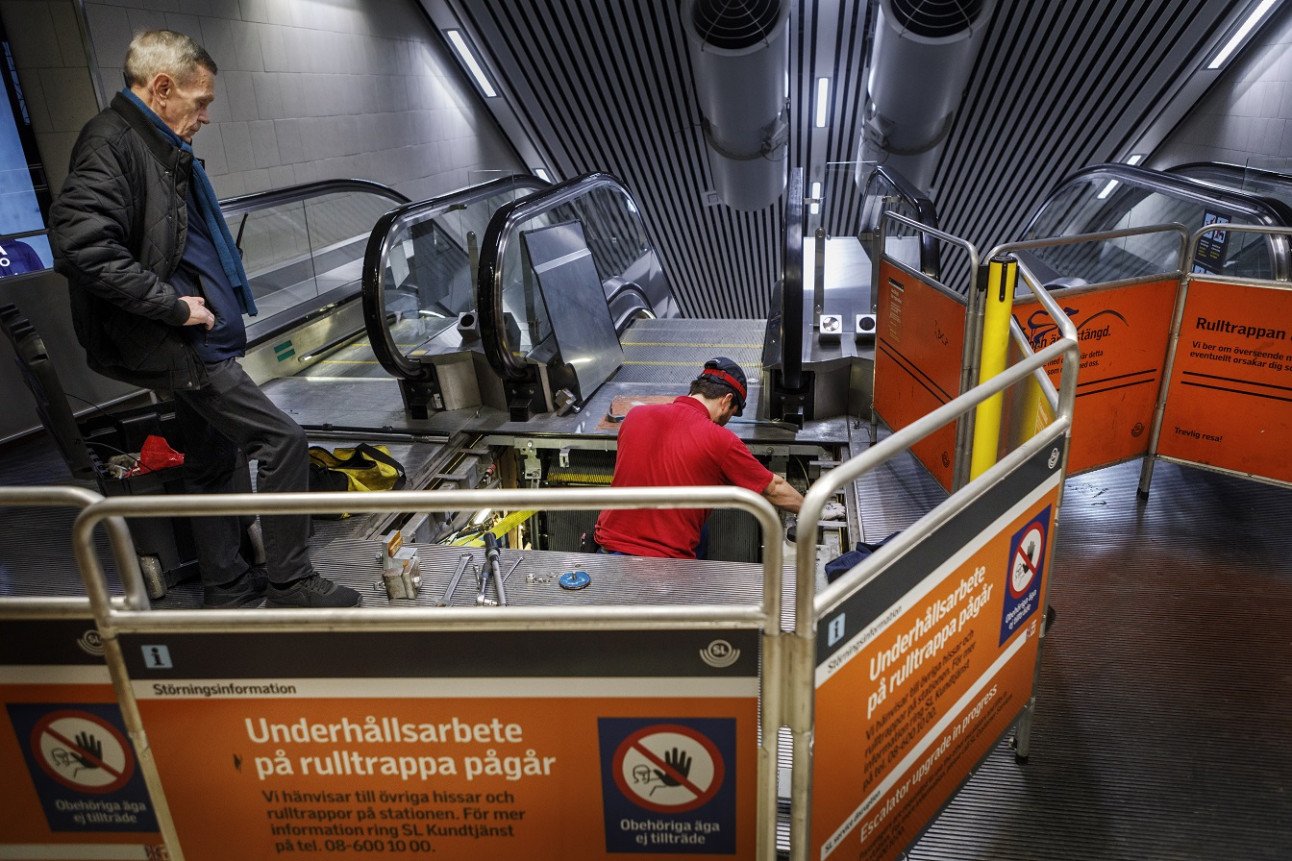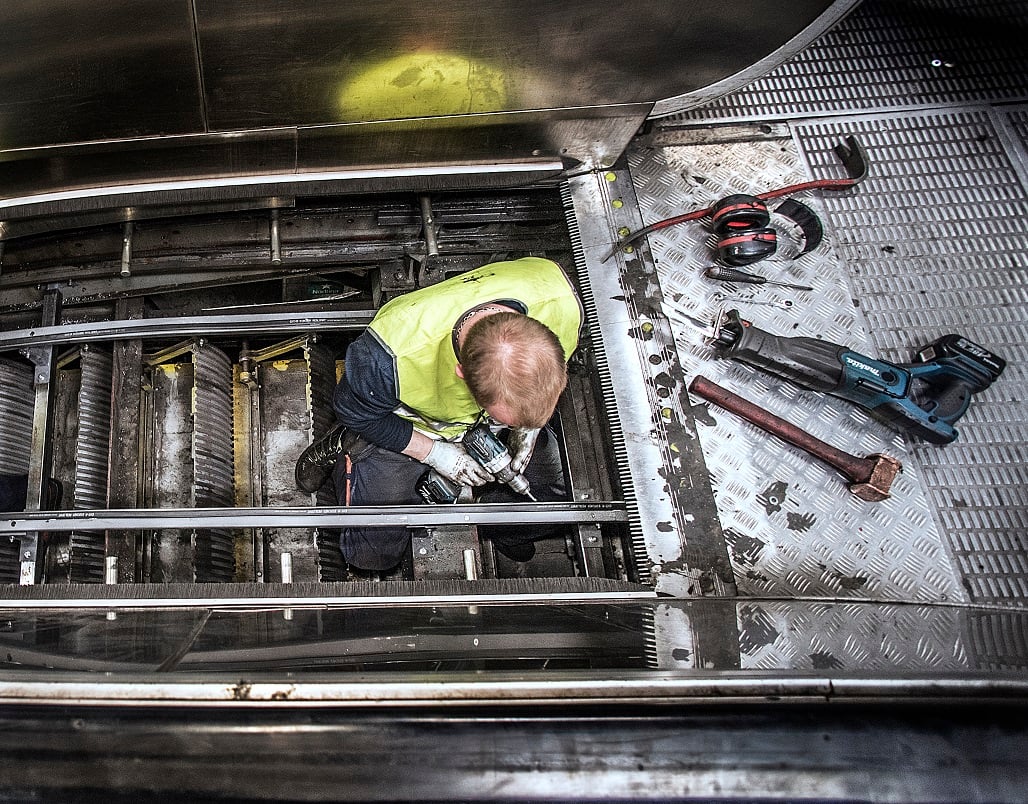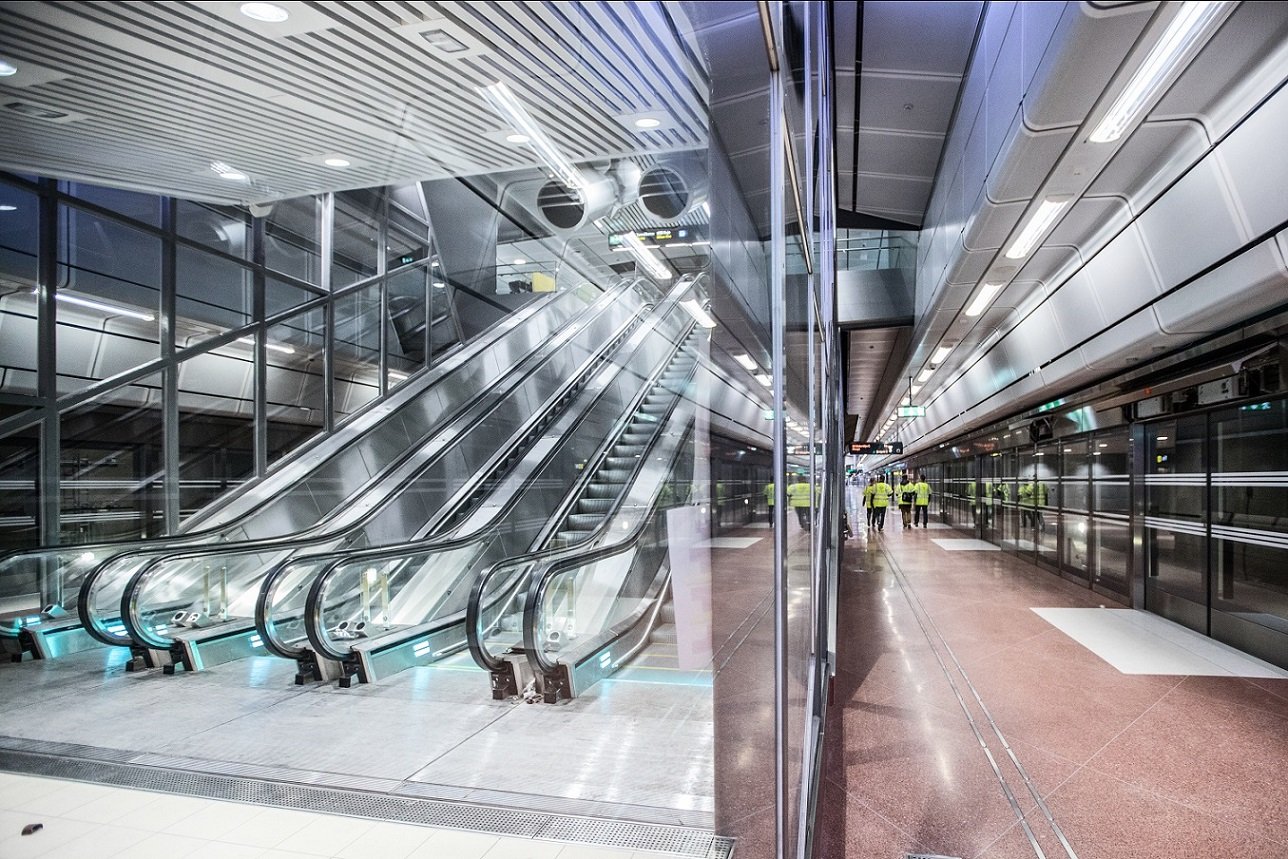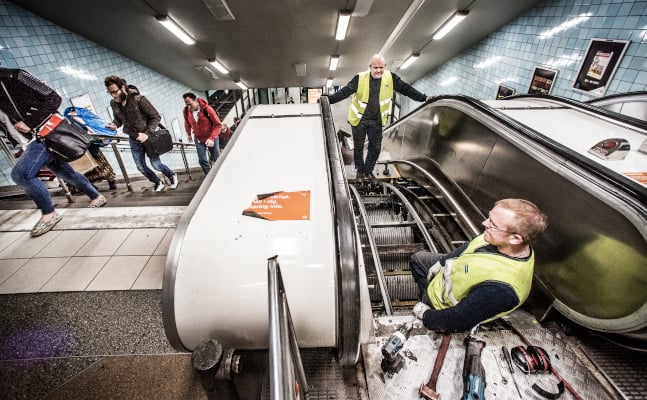After hearing from several Stockholm-based readers that escalator breakdowns were causing frustration, The Local looked into the issue and spoke to the company responsible for the city's public transport. So is the rate of escalator breakdowns as high as it might feel, what are the causes, and is anything being done to fix it?
 The Stockholm Metro system is home to many different art styles. Photo: Tobias Lindman/Flickr CC
The Stockholm Metro system is home to many different art styles. Photo: Tobias Lindman/Flickr CC
How many escalators are there in Stockholm, and how often do they break down?
The Stockholm public transport system includes commuter and underground trains as well as ferries, buses, light rail and trams.
In 2018 an average of 3,000,000 journeys were registered each day, with over 2,200 buses, 497 metro and 129 commuter train carriages, 80 boats and many more vehicles passing through the more than 7,000 stations, stops and docks across Stockholm.
Stockholm Public Transport (SL or AB Storstockholms Lokaltrafik in Swedish) has 500 escalators and 465 elevators running in the capital, vastly outnumbering other public transport systems in the Nordic countries.
Statistics of the frequency of broken-down escalators are not readily available. In 2019, between January 1st and March 31st, 6,779 error reports were filed regarding the metro escalators, however according to SL's estimates, only a fraction of these resulted in lengthy stand-stills and maintenance requirements.
An error report also does not always mean that an escalator is out of action – 1,234 of the error reports above refer to vandalisation such as graffiti or stickers, which does not in itself stop the escalator from running.
Earlier estimates by SL state a frequency of two stops per escalator facility during an average month, with most of these stops resolved within two hours.
It is often the case that older escalators or those in an wear-and-tear environment are more prone to breakdowns, according to SL.
“We are very well aware that stopped and stationary elevators are causing frustration and problems for our passengers,” Claes Keisu, communication officer at SL, told The Local.
Why has my commute been interrupted?
Most escalators are custom-built for their location and it is usually difficult and time-consuming to get the right replacement parts.
“Escalators are complicated, custom-built constructs. They are subjected to a huge amount of wear and tear over the years. They have a life span of at least 30 years, often longer, and our oldest escalators still in use are from 1964,” Keisu continued.
The custom build and long life span means spare parts often have to be made from scratch to fit a specific escalator. Off-the-shelf parts are quite rare, so repairs are not as speedy as you might hope.
Keisu told The Local that it is not always an option to change which direction an escalator rides, which might help passengers by allowing them to walk down rather than up stairs, if just one of a set of escalators has broken.
“Escalators that have been running for a long time might not be able to switch direction because of ground-down mechanical parts such as cogs and drive chains, doing so would risk breaking the parts and cause an even longer reparation and delay,” he said.
 Maintenance crew servicing escalators at Stockholm City station in 2019. Photo: Simon Rehnström/SvD/TT
Maintenance crew servicing escalators at Stockholm City station in 2019. Photo: Simon Rehnström/SvD/TT
What causes the breakdowns?
But why exactly is it that it often feels like there are so many immobile escalators in Stockholm?
“A lot of the times they are stopped because of someone screwing with the emergency stop or that they've been vandalised with graffiti or stickers on the handrails and so on, in which case the escalator is shut down until it has been fixed,” says Keisu.
Another common problem relates to the comb plate.
These plates are located at the top and bottom of the escalator, at the spot where the steps disappear from view. This section tends to be the main cause of escalators stopping.
Escalator steps usually have sloping edges, and the grooves meshes snugly with the comb as the steps return inside the escalator. The comb is supposed to push foreign objects such as shoes, fingers or clothing out of the way, preventing them from getting caught between the moving steps and the floor plate.
“If anything gets stuck in the combs the escalator stops automatically. It is a safety feature and it doesn't differentiate between a shoelace, the hem of a skirt or a stuck rock,” explained Keisu.
 Maintenance work at Hötorget, Stockholm. The comb plate is to the right of the man's head. Photo: Tomas Oneborg/SvD/TT
Maintenance work at Hötorget, Stockholm. The comb plate is to the right of the man's head. Photo: Tomas Oneborg/SvD/TT
Sweden's planning permission watchdog – the Swedish National Board of Housing, Building and Planning (Boverket) – has strict rules when it comes to damaged combs. If one tooth is missing or damaged, the escalator needs to be stopped and the combs replaced.
And Sweden's cold winters are often one of the reasons this happens in Stockholm.
“This is a common cause of stops, especially during the time of year when gravel and sand is used on streets, sidewalks and platforms to prevent people slipping. Travellers inadvertently bring with them gravel which gets into the escalators. This causes wear on the steps and combs which, if the escalator doesn't stop on its own, is a reason why they're being stopped, while waiting to remove all of the trash,” says Keisu.
Why do repairs take so long?
Commuter frustration isn't helped by the fact that some escalators are under repair for several weeks at a time. Keisu explains why this might be the case.
“Other causes of still-standing escalators are that they are being serviced or inspected. At most of the metro stations there are crawl spaces beneath the escalator where maintenance crews do their work, which is why people might not notice anyone working on a stopped escalator.”
SL prioritises work on escalators which affect the accessibility of station, such as if several escalators are shut down simultaneously. In these cases their maintenance contractors may be forced to make do with temporary solutions in order to get at least some of the escalators going again.
“This may result in a feeling of recurrence with stopped escalators, even though it is actually just the same issue that takes a long time to fix. Temporary solutions are only done if they're deemed safe for travellers and escalators alike,” he says.
Major problems at commuter train stations
In July 2018, one escalator at the Stockholm City station stopped without warning and started running in the wrong direction.
“It stopped abruptly, everyone fell backwards in free fall. It was just lucky that more people weren't seriously injured,” SL's managing director at the time, Caroline Ottosson, said at a press conference.

Stockholm City. Inset, half of one of the new couplings that were already rusty. Photos: Tomas Oneborg/SvD/TT & Hossein Salmanzadeh/TT
After an inspection, it turned out that many of the escalators at Stockholm Odenplan and City, part of the city's new commuter train line Citybanan, were rusty and showed extensive wear and tear.
The two stations were built by The Swedish Transport Administration (Trafikverket), which also handled the procurement process of the escalators. In July 2017, SL assumed control over the escalators and elevators.
“We already knew at the time when we took over the stations that the escalators weren't of the quality and standard that we demanded. They were riddled with errors and during summer 2018, we had a collapse in one of the escalators at the Stockholm City station,” SL communications officer Claes Keisu remarked.
Even though most of the escalators at Odenplan and City have been running since spring of 2019 they are still beset by minor problems, making them more prone to stopping than other escalators in SL's care.

Escalators down to the Stockholm City train station, prior to opening in 2017. Photo: Adam Wrafter/SvD/TT
Since the accident the escalators have been inspected and protective measures have been taken, such as changing all the couplings and fitting additional brakes, Keisu said. The maintenance team also tries to minimise downtime while servicing the escalators.
“Most of the work done to fix the Citybanan escalators are done at night, when the stations are empty of people,” he said.
Between 2015 and 2019 SL had a replacement project with an earmarked budget of 1.5 billion kronor and since 2015 they have replaced and switched out 130 elevators and 66 escalators.
(Reports and documents, in Swedish: Inspector's conclusion, replacement project, SL analysis of new stations)


 Please whitelist us to continue reading.
Please whitelist us to continue reading.
Member comments